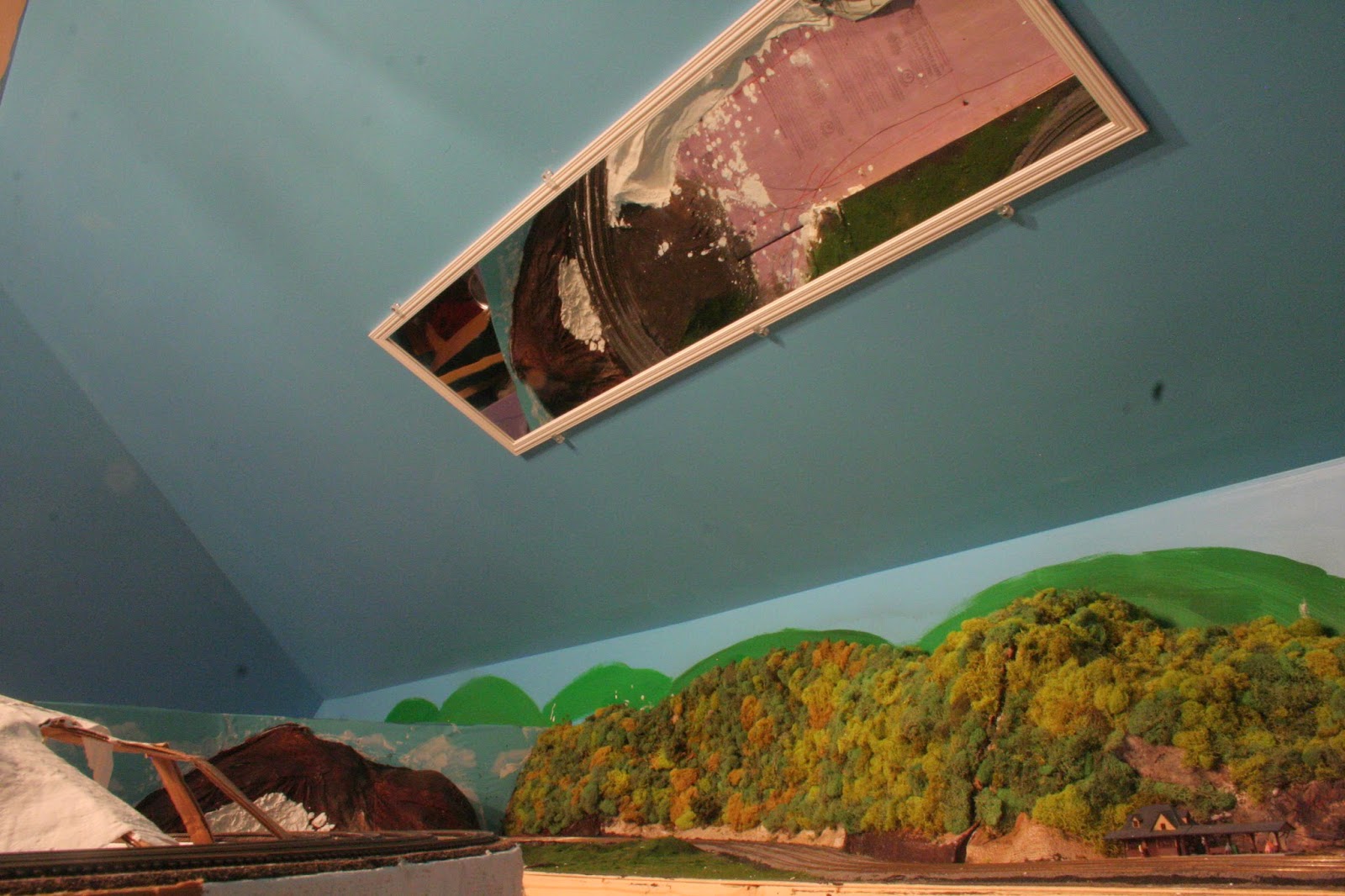 |
My old Garden Railway circa 2001
|
I've been into model railroading most of my life and have almost always had a layout of one form another since I was at least eight years old. This wasn't easy since we lived in very small house growing up. Since I'd accumulated a small G Scale fleet, the obvious solution was to build a garden railroad. In 1998, I did just that.
The Garden Railway started out as a simple loop of track on a plot of land that had once been a vegetable garden. But it slowly grew from one loop to two, and then stretched it's way across the back yard.
At first, the whole thing actually a bit frustrating. I had very little money and G Scale building are expensive. Okay, G Scale everything is expansive. So yeah, I was always a bit disappointed in my efforts in that my railroad never seemed to measure up to the beautiful backyard empires featured in Garden Railways magazine.
That all changed in 2001, when I got my first part-time job. Suddenly I found myself with a lot more money at my disposal. After I got my first paycheck, I opened a copy of Garden Railways, thumbed to a dealer ad listing all the locomotives and rolling stock I dreamt of owning and realized "hey! I can afford this!" So I started sinking some pretty serious money into engines, rolling stock, track and wiring.
I still made a lot of mistakes with that railroad. For one thing, I used brass track, which is nearly impossible to keep clean, making for some very balky train operation. I also used many sharp curves and steep grades, which also reduced operation reliability. On top of that, the railway had a few electrical gremlins that I never could get squared away. But when the railroad ran, it ran very well.
But then, in 2007, my parents sold the family home and bought a place in South Carolina. So, after nine mostly fun-filled years, the railroad was pulled up. I packed all my G Scale stuff away, only taking it out each year to circumnavigate the Christmas Tree.
Fast forward to today. I now own my own home and have a back yard with a spot that's just crying out for a garden railway. Not only that, but I have my wife's blessing to build a garden railway on said spot. Now money is tight and I have a lot of things competing for my spare time, so said garden railway is still at least a year or two off. But it's never too early to start planning right? I've definitely learned from my past mistakes and have a plan in mind.
To wit:
-Keep it small and simple. One loop with a passing siding and a few industrial sidings. I think the Pittsburgh Division more than satisfies my desire to run multiple trains at once and have complex operations. Plus G Scale turnouts are insanely expensive.
-No brass track! Keeping it clean is next to impossible and nothing kills my enthusiasm faster than balky trains. After trawling around the Internet, I think I'll be using Llagas Creek (
link) nickel silver flex track.
-No sharp curves or steep grades. These caused nothing but grief on my last garden railway.
-More bullet-proof wiring.
I've also got a whole laundry list of wants:
-Model a prototype. I originally wanted to model the Ulster & Delaware (
Link) in N Scale before deciding to model the Pennsy.
-A rural branch line feel. I enjoy the big main-line feel of the Pennsy but I also have a certain affection for the run-down, lightly-used country branch lines.
-A Timber trestle.
-A small town
-A mountain range.
Anyway, as I've said, this is still a ways off, but I'll keep y'all posted.


















































